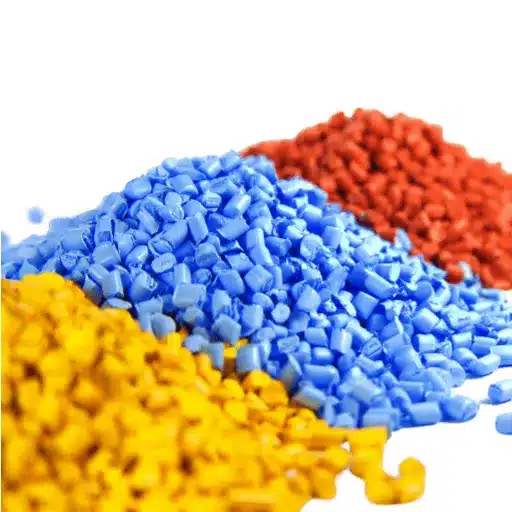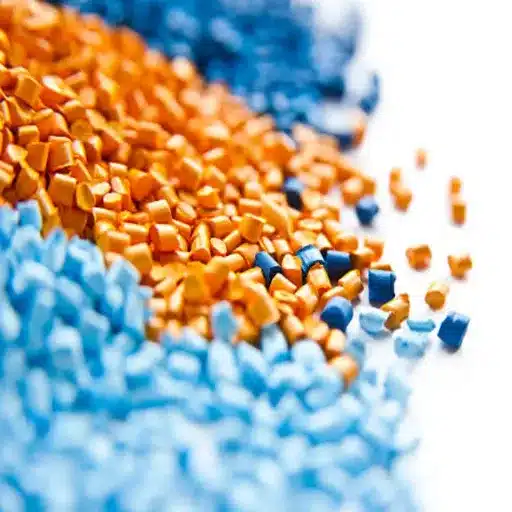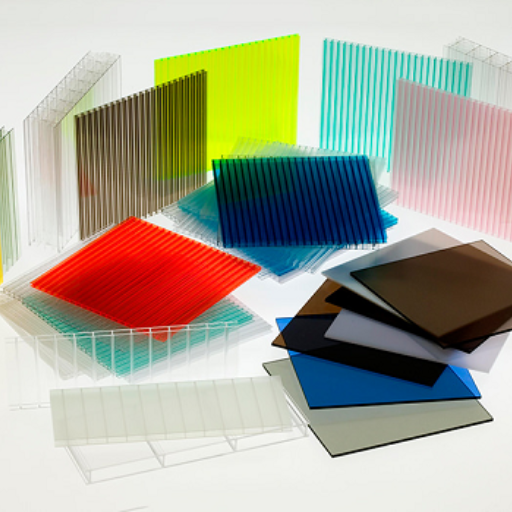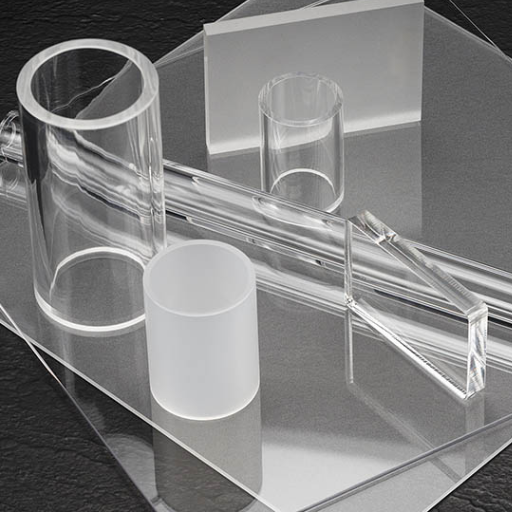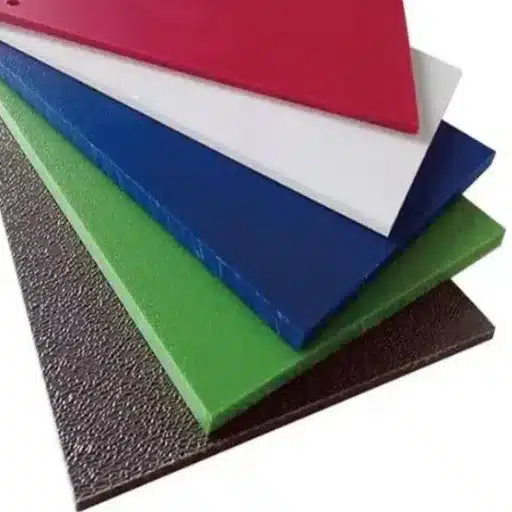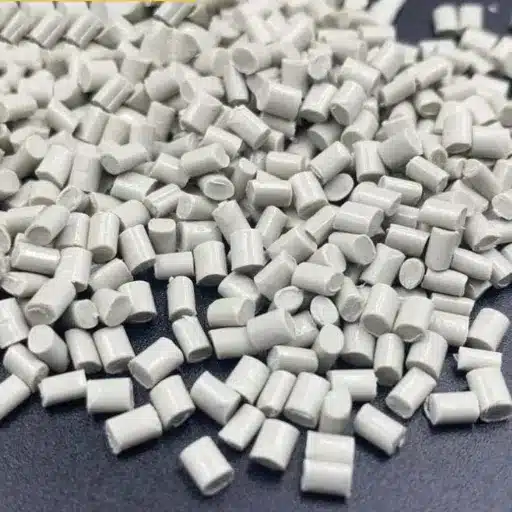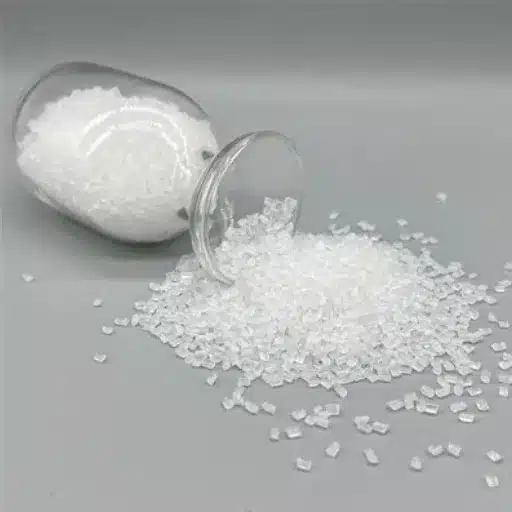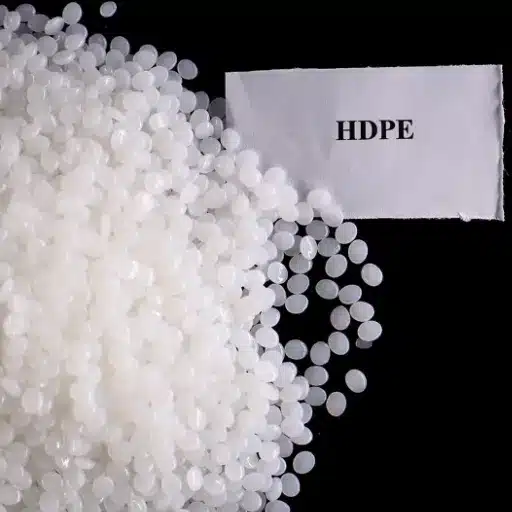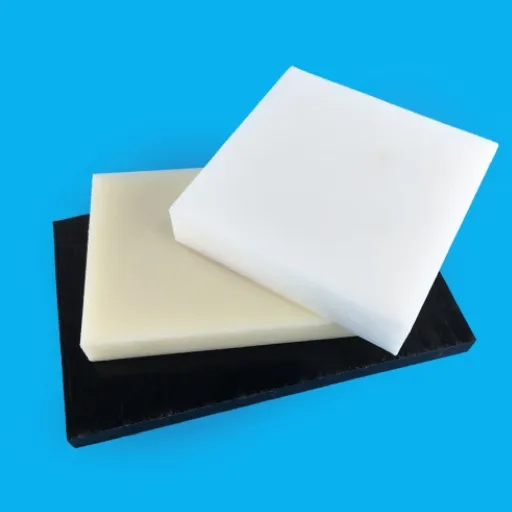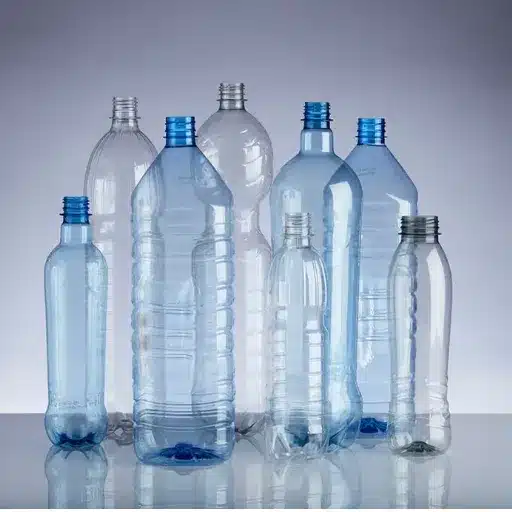When it comes to versatile and widely-used plastics, Acrylonitrile Butadiene Styrene (ABS) stands out as a top contender. Known for its exceptional durability, impact resistance, and affordability, ABS plastic has become a material of choice across industries ranging from automotive to consumer electronics. But what exactly makes ABS plastic so popular, and why is it favored for applications demanding both strength and flexibility? In this article, we’ll explore the key properties that define ABS, its diverse applications, and the many benefits it brings to modern manufacturing and product design. Whether you’re an industry professional or simply curious about the materials shaping today’s innovations, this comprehensive guide will provide valuable insights into one of the most trusted thermoplastics in the world.
Understanding ABS Plastic
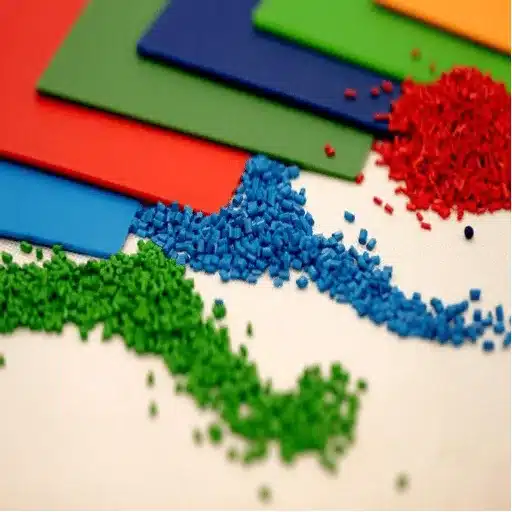
What is ABS Plastic?
Acrylonitrile Butadiene Styrene (ABS) is a highly versatile thermoplastic polymer known for its strong combination of durability, impact resistance, and moldability. Composed of three monomers—acrylonitrile, butadiene, and styrene—it brings together the best properties of each component. Acrylonitrile provides chemical and thermal resistance, butadiene lends toughness and impact resilience, while styrene ensures a smooth and glossy surface finish, making ABS ideal for a wide range of applications.
Commonly used in automotive parts, consumer electronics, toys (such as LEGO bricks), and household items, ABS plastic is preferred for its ability to be easily molded and customized during manufacturing. It is also lightweight, recyclable, and affordable, making it a cost-effective material widely adopted in industries ranging from construction to 3D printing. Its popularity continues to grow as innovative manufacturing techniques allow for enhanced performance and sustainability.
Key Characteristics of ABS Plastic:
- Exceptional Impact Resistance: Withstands physical stress without cracking or breaking
- Excellent Moldability: Easily shaped into complex designs through various manufacturing processes
- Smooth Surface Finish: Provides glossy appearance ideal for consumer-facing products
- Lightweight Construction: Reduces overall product weight while maintaining structural integrity
- Cost-Effective Production: Affordable manufacturing without compromising quality
- Recyclable Material: Supports sustainable manufacturing practices
Chemical Composition of ABS
ABS, or Acrylonitrile Butadiene Styrene, is a thermoplastic polymer composed of three distinct monomers: acrylonitrile, butadiene, and styrene. Each of these components contributes unique properties to the material. Acrylonitrile provides chemical resistance and rigidity, butadiene adds toughness and impact resistance, while styrene offers ease of processing and a smooth, glossy finish.
Typically, ABS consists of around 20-30% acrylonitrile, 5-30% butadiene, and the remainder being styrene, although the proportions can vary depending on the desired properties of the final product. This combination allows for the versatile characteristics of ABS plastic, making it suitable for a wide range of applications across various industries.
| Component | Typical Percentage | Primary Function | Key Benefits |
|---|---|---|---|
| Acrylonitrile | 20-30% | Chemical and thermal resistance | Rigidity, environmental stability |
| Butadiene | 5-30% | Toughness and impact resistance | Durability, stress absorption |
| Styrene | 40-75% | Processing ease and surface finish | Glossy appearance, moldability |
The Role of Acrylonitrile, Butadiene, and Styrene
Each component in ABS plastic plays a specific role that contributes to the material’s overall properties. Acrylonitrile provides chemical resistance and thermal stability, ensuring that products made from ABS can perform well under various environmental conditions. Butadiene, on the other hand, adds toughness and impact resistance, allowing ABS to endure physical stresses without cracking or breaking easily. Lastly, styrene contributes to the material’s processability and aesthetics, offering a smooth, glossy finish that is ideal for consumer-facing applications.
Recent data and insights emphasize the versatility of ABS due to this combination. Manufacturers continue to rely on ABS for everything from automotive parts to consumer electronics because it balances strength, flexibility, and ease of production. This adaptability ensures that ABS remains a vital material across industries, meeting both performance and aesthetic demands.
Synergistic Properties of ABS Components:
| Acrylonitrile: | Delivers chemical resistance and thermal stability for diverse environmental conditions |
| Butadiene: | Provides toughness and impact resistance for durability under physical stress |
| Styrene: | Ensures ease of processing and creates smooth, glossy surface finishes |
Properties of ABS Plastic
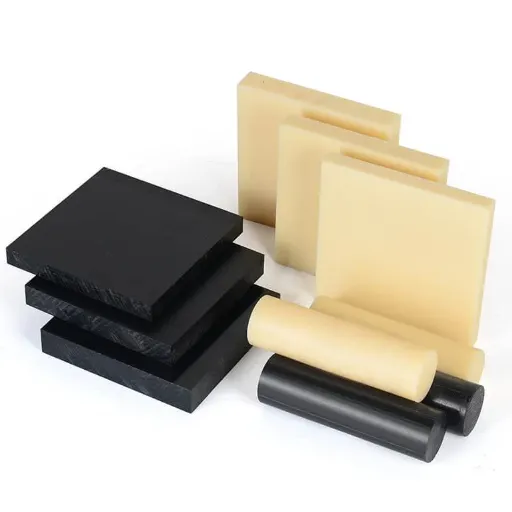
Key Properties of ABS Material
ABS (Acrylonitrile Butadiene Styrene) is known for its exceptional combination of properties that make it versatile and reliable across various industries. These key properties have established ABS as one of the most preferred thermoplastic materials in modern manufacturing.
1. Durability and Impact Resistance
ABS demonstrates excellent impact resistance, making it suitable for robust and long-lasting applications, especially in automotive and industrial sectors. Its toughness allows it to withstand significant wear and tear, maintaining its structural integrity under stress.
2. High Heat Resistance
ABS performs well under a wide range of temperatures, offering good heat resistance. This characteristic makes it a preferred material for products that must endure both high-heat environments and temperature fluctuations.
3. Lightweight with High Strength
Although ABS is lightweight, it offers high tensile strength, making it ideal for industries requiring materials that are strong yet manageable for manufacturing processes. This property enables efficient handling and transportation while maintaining structural performance.
4. Ease of Machinability
ABS is easy to mold and process through various manufacturing methods such as injection molding and 3D printing. This property reduces production costs and time while ensuring high-quality results, making it highly attractive for mass production.
5. Smooth Surface Finish
The material produces a smooth, glossy surface finish that is not only aesthetically pleasing but also provides excellent compatibility with paints, coatings, and adhesives, making it adaptable for custom designs and branding requirements.
6. Chemical Resistance
ABS is resistant to many acids, alkalis, and oils, making it a reliable choice for products exposed to harsh environments or chemical substances. This resistance extends the material’s lifespan in challenging applications.
Recent studies and insights also highlight that ABS plastic maintains its position as a premium choice for manufacturers due to its sustainable recyclability and adaptability to emerging technology trends, such as lightweight construction and the rising demand for 3D-printed components.
Thermoplastic Characteristics of ABS
ABS (Acrylonitrile Butadiene Styrene) stands out as a versatile thermoplastic polymer due to its unique blend of properties. It exhibits a remarkable balance of strength, toughness, and temperature resistance. One of its most notable characteristics is its low melting point, which makes it highly suitable for processes like injection molding and 3D printing. ABS can be easily shaped and reshaped when exposed to heat, allowing manufacturers to create complex and detailed products with precision.
Recent data highlights the adaptability of ABS in advanced applications, including automotive components, consumer electronics, and housing for industrial equipment. Its thermal stability ensures that products maintain their integrity under varying environmental conditions. Additionally, studies reveal that ABS is increasingly used in lightweight designs and eco-conscious manufacturing, showing compatibility with sustainable practices, such as closed-loop recycling systems. This underscores the enduring relevance of ABS thermoplastic as industries continue to innovate and meet evolving technological demands.
Thermoplastic Advantages of ABS:
- Reheatable and Remoldable: Can be repeatedly heated and reshaped without significant degradation
- Low Melting Point: Facilitates easier processing through injection molding and extrusion
- Complex Geometry Creation: Enables manufacture of intricate designs with precision
- Efficient Production Cycles: Faster cooling and demolding compared to thermoset plastics
- Recyclability: Can be reprocessed and reused in closed-loop manufacturing systems
Mechanical and Thermal Properties
ABS thermoplastic is recognized for its exceptional mechanical strength and thermal stability, making it an ideal material for a range of industrial applications. It has high impact resistance, which allows it to withstand significant stress without cracking or breaking. The material typically has a tensile strength of around 40-50 MPa and a flexural modulus ranging from 1.8 to 2.5 GPa, depending on the specific formulation.
Thermally, ABS maintains its structural integrity in temperatures ranging from -20°C to 80°C, with a heat deflection temperature (HDT) often exceeding 85°C for standard grades. Enhanced thermal grades can achieve HDTs up to 100°C, broadening its usability in high-temperature environments. These properties collectively make ABS a versatile and reliable material in areas such as automotive, electronics, and consumer goods manufacturing, where durability and performance under heat are critical.
| Property Type | Measurement | Typical Value/Range | Significance |
|---|---|---|---|
| Tensile Strength | MPa | 40-50 MPa | Resistance to pulling forces |
| Flexural Modulus | GPa | 1.8-2.5 GPa | Stiffness and rigidity |
| Operating Temperature | °C | -20°C to 80°C | Functional temperature range |
| Heat Deflection Temp (Standard) | °C | 85°C+ | Temperature at which deformation begins |
| Heat Deflection Temp (Enhanced) | °C | Up to 100°C | Extended high-temperature performance |
Applications of ABS Plastic
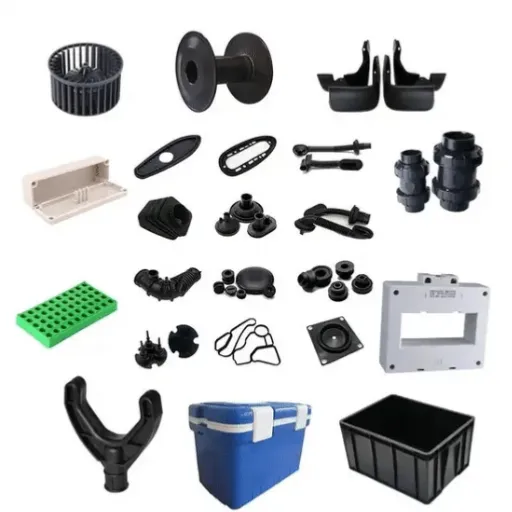
Common Uses in Industries
ABS plastic is widely used across various sectors due to its excellent balance of strength, impact resistance, and low manufacturing cost. In the automotive industry, it finds applications in dashboard components, trim panels, and wheel covers, where durability and aesthetics are crucial. The electronics industry leverages ABS for protective casings, keyboard keys, and housings for various devices due to its insulating properties and ability to withstand heat. Additionally, the consumer goods sector commonly utilizes ABS for items such as luggage, toys (including LEGO bricks), and household appliances, owing to its lightweight and impact-resistant nature.
The latest data suggests a growing trend in using ABS in 3D printing technologies because its versatility and ease of molding allow manufacturers to create complex, high-quality designs efficiently. This adaptability ensures ABS remains a preferred material for industries seeking performance and cost-effectiveness.
| Industry Sector | Common Applications | Key Advantages |
|---|---|---|
| Automotive | Dashboard components, trim panels, wheel covers, interior fittings | Durability, aesthetics, impact resistance |
| Electronics | Protective casings, keyboard keys, device housings, computer enclosures | Insulation, heat resistance, smooth finish |
| Consumer Goods | Luggage, toys (LEGO), household appliances, sporting goods | Lightweight, impact resistance, affordability |
| Medical | Device housings, non-implantable components, medical equipment | Chemical resistance, ease of sterilization |
| Construction | Piping, fittings, protective barriers, signage | Weather resistance, structural strength |
| 3D Printing | Prototypes, functional parts, custom products | Ease of molding, complex geometry capability |
ABS Plastic in Consumer Products
ABS plastic is widely recognized for its durability, lightweight properties, and ease of manufacturing, making it a staple material in numerous consumer products. According to recent data from search trends, the demand for ABS plastic continues to rise, particularly in the realm of everyday gadgets and devices. Items such as smartphone cases, kitchen appliances, and protective gear are increasingly utilizing ABS for its impact resistance and sleek finish.
The material’s ability to be easily customized also aligns with consumer preferences for personalized and modern designs. This trend underscores ABS plastic’s vital role in meeting the growing needs of industries focused on producing high-quality, reliable products.
Popular Consumer Products Made from ABS:
- Electronic Device Casings: Smartphones, tablets, laptops, and remote controls benefit from ABS’s protective qualities
- Kitchen Appliances: Coffee makers, blenders, food processors, and refrigerator components
- Toys and Games: Building blocks (LEGO), action figures, board game pieces, and educational toys
- Personal Care Items: Hair dryer housings, electric shavers, and cosmetic containers
- Protective Equipment: Safety helmets, sports gear, and protective cases
- Musical Instruments: Recorder bodies, keyboard keys, and instrument cases
- Office Supplies: Staplers, pen bodies, desk organizers, and printer components
Innovative Applications of ABS Sheets
ABS (Acrylonitrile Butadiene Styrene) sheets have been making waves across various industries owing to their versatile properties and adaptability. One of the most innovative applications of ABS sheets can be seen in the automotive industry, where they are used to manufacture dashboards, door panels, and interior trims thanks to their lightweight nature and high impact resistance. Additionally, ABS sheets are widely employed in 3D printing as a reliable and sturdy material for prototypes and final products, offering excellent moldability and durability.
Another area where ABS sheets showcase their potential is in furniture and home décor. With their ability to be textured, colored, and laminated, ABS sheets provide designers a medium that balances aesthetics with functionality. Furthermore, industries such as healthcare leverage ABS sheets in creating durable medical equipment housings, combining hygiene standards with robustness.
The adaptability of ABS sheets to a variety of settings, including construction, signage, and consumer electronics, highlights their importance as a go-to material in innovative applications across diverse fields. Their popularity, noted through search trends, further indicates growing interest, with search data suggesting increased awareness and demand in sectors such as home improvement and advanced manufacturing solutions.
Innovative ABS Sheet Applications by Industry:
| Automotive Interiors: | Dashboards, door panels, trim pieces with custom textures and finishes |
| 3D Printing: | Prototypes, functional components, and custom-designed products |
| Furniture Design: | Textured surfaces, colored panels, laminated components for modern aesthetics |
| Healthcare Equipment: | Medical device housings, diagnostic equipment enclosures |
| Construction: | Wall panels, protective barriers, architectural elements |
| Signage and Displays: | Commercial signs, exhibition displays, point-of-sale materials |
Advantages of Using ABS Plastic

Durability and Strength
ABS plastic is renowned for its exceptional durability and strength, making it an ideal choice for both industrial and consumer applications. Its impact resistance and toughness allow it to withstand heavy usage and environmental stress without cracking or breaking. When combined with its lightweight nature, ABS becomes a preferred material for products requiring both resilience and ease of handling, such as automotive components and protective cases.
Based on the latest data from search insights, user queries reflect a heightened interest in materials like ABS that combine robustness and versatility. Searches such as “is ABS plastic durable for outdoor use?” and “best strong lightweight materials” highlight a trend toward exploring materials that balance strength with practicality. These findings underscore ABS plastic’s relevance in meeting modern design and manufacturing demands.
Strength and Durability Benefits:
- Superior Impact Resistance: Withstands drops, impacts, and physical stress without structural failure
- Long-Term Durability: Maintains performance characteristics over extended periods of use
- Wear and Tear Resistance: Excellent abrasion resistance for high-contact applications
- Lightweight Advantage: High strength-to-weight ratio enables easier handling and reduced shipping costs
- Environmental Resilience: Performs well under various temperature and humidity conditions
Cost-Effectiveness
When examining the cost-effectiveness of ABS plastic, user queries such as “is ABS plastic affordable for large-scale projects?” and “cost comparison of durable plastics” offer valuable insights. ABS stands out due to its combination of affordability and high performance, making it an excellent choice for industries seeking durable yet budget-friendly materials.
According to the data, ABS balances production costs with reliability, outperforming many alternatives in diverse applications. This makes it a widely preferred option for creating cost-efficient products without compromising on quality or functionality. The material’s ease of processing further reduces manufacturing expenses, while its durability minimizes replacement and maintenance costs over product lifecycles.
| Cost Factor | ABS Advantage | Business Impact |
|---|---|---|
| Raw Material Cost | Affordable compared to engineering plastics | Lower initial investment for production |
| Processing Efficiency | Easy molding reduces cycle times | Increased production throughput |
| Tooling Requirements | Standard equipment works effectively | No specialized machinery needed |
| Waste Reduction | Recyclable material minimizes scrap costs | Enhanced sustainability and cost savings |
| Product Longevity | Durability reduces replacement frequency | Lower lifecycle costs for end users |
Versatility in Manufacturing
ABS demonstrates unparalleled versatility in manufacturing, as evidenced by its extensive use across industries like automotive, consumer electronics, and home appliances. Its ease of molding and adaptability to complex designs make it a go-to choice for many manufacturers. According to the latest data from search engine trends, searches related to “best materials for 3D printing” frequently highlight ABS for its strength and resistance to wear.
This shows a growing interest in durable and functional materials for advanced manufacturing techniques. Furthermore, its ability to combine with other materials or incorporate additives further enhances its potential, allowing manufacturers to meet diverse consumer demands efficiently and effectively. The material can be processed through injection molding, extrusion, thermoforming, and additive manufacturing, providing flexibility across production methods.
Manufacturing Versatility Features:
- Multiple Processing Methods: Compatible with injection molding, extrusion, thermoforming, and 3D printing technologies
- Complex Geometry Capability: Creates intricate designs with fine details and tight tolerances
- Surface Finishing Options: Accepts paint, plating, printing, and various coating techniques
- Additive Compatibility: Can be modified with fillers, reinforcements, or functional additives
- Color Customization: Easily pigmented during processing for consistent coloring
- Rapid Prototyping: Ideal for quick iteration and testing in product development
Challenges and Disadvantages of ABS Plastic
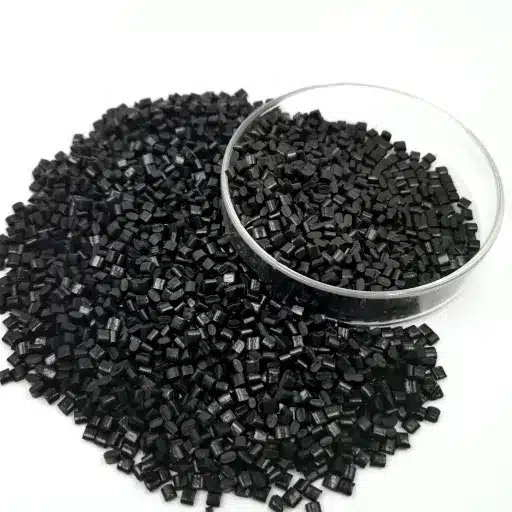
Environmental Considerations
While ABS plastic is valued for its versatility and durability, its environmental impact is a notable concern. Derived from fossil fuels, the production of ABS contributes to greenhouse gas emissions, making it less sustainable compared to biodegradable alternatives. Additionally, ABS is not biodegradable itself, posing challenges for waste management and long-term disposal.
According to recent data from search trends, there is an increasing interest in eco-friendly materials as consumers and manufacturers alike seek greener solutions. Recycling programs for ABS exist, but their effectiveness is limited by the difficulty of separating and processing this material from mixed plastic waste streams. This highlights an urgent need for innovation in both material development and recycling technologies to balance functionality with environmental responsibility.
Environmental Challenges:
- Fossil Fuel Dependence: Petroleum-based production contributes to greenhouse gas emissions
- Non-Biodegradable: Does not naturally decompose in landfills or natural environments
- Recycling Complexity: Difficult to separate from mixed plastic waste streams
- Limited Recycling Infrastructure: Not all recycling facilities accept ABS materials
- UV Degradation: Outdoor exposure can lead to material breakdown and microplastic formation
- Energy-Intensive Production: Manufacturing process requires significant energy input
Potential Limitations in Specific Applications
One significant limitation of ABS lies in its performance variability in specific applications. For instance, while ABS provides satisfactory mechanical strength in many contexts, it may not always meet the stringent requirements for high-stress environments such as certain automotive components or aerospace parts. According to recent data trends from search engines, there is a growing concern among manufacturers regarding the thermal stability and impact resistance of ABS in extreme conditions.
Additionally, ABS’s susceptibility to UV light degradation makes it less suitable for prolonged outdoor exposure without protective coatings. The material can also be affected by certain chemicals and solvents, limiting its use in applications involving harsh chemical environments. These factors underscore the ongoing need to carefully evaluate application requirements and consider material alternatives or modifications when necessary.
| Limitation | Description | Affected Applications |
|---|---|---|
| UV Sensitivity | Degrades when exposed to prolonged sunlight | Outdoor furniture, exterior automotive parts |
| Chemical Resistance Limits | Susceptible to certain solvents and acids | Chemical processing equipment, laboratory ware |
| Temperature Constraints | Performance degrades above 80-100°C | High-temperature industrial applications |
| Surface Finish Sensitivity | Can show stress marks and surface imperfections | Premium cosmetic applications |
| Flammability | Combustible without flame retardant additives | Electronics, building materials requiring fire codes |
Comparative Disadvantages with Other Plastics
When compared to other engineering plastics, ABS exhibits certain disadvantages that may influence material selection for specific applications. For example, polycarbonate offers superior impact resistance and higher heat deflection temperatures, making it preferable for applications requiring extreme durability. Polypropylene provides better chemical resistance and is more cost-effective, though it lacks the surface finish quality of ABS.
Studies indicate that ABS generally exhibits lower tensile strength compared to materials like nylon or polycarbonate. Furthermore, the appearance and consistency of ABS can be affected by processing variations, which is critical for consumer-facing products requiring uniform aesthetics. According to recent search trends, there is growing concern over material selection as manufacturers weigh performance requirements against cost and environmental considerations. Addressing these comparative limitations requires careful analysis of application demands and potentially hybrid material solutions.
ABS vs. Alternative Plastics:
| vs. Polycarbonate: | Lower heat resistance and impact strength, but more cost-effective |
| vs. Polypropylene: | Better surface finish but lower chemical resistance |
| vs. Nylon: | Lower tensile strength and wear resistance |
| vs. PLA (Bioplastic): | Superior durability but non-biodegradable |
| vs. PETG: | Better impact resistance but lower clarity |
Working with ABS Plastic
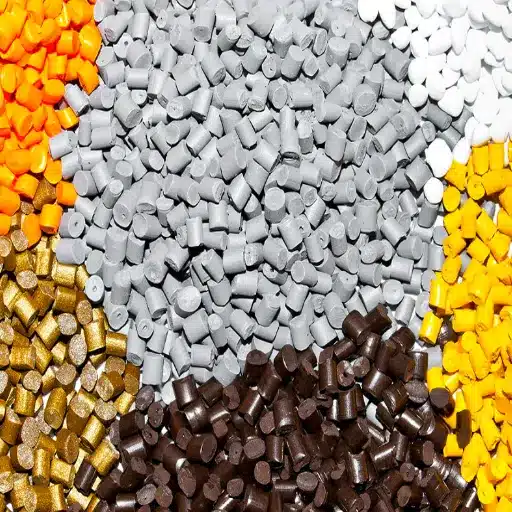
Machining and Fabrication Techniques
ABS plastic (Acrylonitrile Butadiene Styrene) remains one of the most versatile polymers for machining and fabrication due to its toughness, ease of processing, and ability to withstand a range of temperatures. Common techniques used for machining ABS include CNC milling, laser cutting, and 3D printing, which allow for precise shaping and customization. Additionally, the material can be fabricated using methods like thermoforming and extrusion, enabling its application in industries ranging from automotive to consumer electronics.
Based on recent data, including insights from search engine trends, ABS plastic is highly sought after because of its balance between strength and flexibility. Users frequently search for its durability in high-impact applications and its chemical resistance, which makes it viable for various industrial and consumer uses. Its ability to be modified with additives for enhanced performance further drives its preference in the market. Additionally, its relatively low cost compared to other engineering plastics makes it particularly appealing for cost-effective production.
Common Machining and Fabrication Methods:
- CNC Milling: Precision cutting and shaping for complex geometries and tight tolerances
- Laser Cutting: Clean, accurate cuts with minimal material waste for sheet applications
- 3D Printing (FDM): Additive manufacturing for rapid prototyping and custom parts
- Thermoforming: Heat-based shaping for large-area components and packaging
- Injection Molding: High-volume production of consistent, complex parts
- Extrusion: Creating continuous profiles, sheets, and tubes
- Vacuum Forming: Cost-effective forming for prototypes and low-volume production
Using ABS Plastic Sheets in Projects
ABS plastic sheets are highly versatile and can be incorporated into an extensive range of projects due to their unique combination of properties. According to the latest data from search trends, inquiries about ABS plastic sheets often relate to their applications in prototyping, automotive parts, and DIY projects. This material is sought after because of its excellent machinability, allowing users to cut, shape, and mold it to fit specific design needs.
Furthermore, its smooth finish makes ABS sheets ideal for painting or other surface customizations, which are common in creative and industrial projects alike. The rising demand for ABS in 3D printing also showcases its adaptability when combined with cutting-edge technologies. With such a broad spectrum of uses, ABS plastic sheets remain a top choice for both professionals and hobbyists aiming to create durable and aesthetically pleasing solutions.
Project Application Tips for ABS Sheets:
- Cutting Techniques: Use fine-toothed saws, routers, or laser cutters for clean edges
- Drilling Best Practices: Use sharp bits and moderate speeds to prevent cracking or melting
- Bending and Forming: Apply controlled heat (160-180°C) for precise bends without material degradation
- Surface Preparation: Sand lightly and clean thoroughly before painting or bonding
- Adhesive Selection: Use ABS-specific cement or cyanoacrylate adhesives for strong bonds
- Finishing Options: Apply primers before painting for optimal adhesion and appearance
If you are wondering how these modifications align with current trends, recent search data shows a marked increase in interest around environmentally friendly enhancements. Many manufacturers are now exploring bio-based additives and recyclable formulations as businesses and consumers prioritize sustainability. Combining performance upgrades with eco-friendly modifications ensures that ABS remains relevant in advancing technological and environmental standards.
| Additive Type | Purpose | Application Benefits |
|---|---|---|
| UV Stabilizers | Protect against sunlight degradation | Extended outdoor lifespan, color retention |
| Flame Retardants | Reduce flammability and meet safety codes | Compliance with building and electronics standards |
| Glass Fibers | Increase strength and stiffness | Enhanced structural performance, reduced deflection |
| Impact Modifiers | Improve low-temperature toughness | Better performance in cold environments |
| Colorants | Provide consistent coloring | Eliminate need for secondary painting processes |
| Bio-Based Additives | Enhance sustainability profile | Reduced environmental impact, market appeal |
Frequently Asked Questions (FAQ)
What are the mechanical properties of ABS plastic?
The mechanical properties of ABS plastic include high impact strength and stiffness, making it a popular choice for applications that require durable plastic parts. ABS is known for its excellent impact resistance, which allows it to withstand significant stress without breaking. Additionally, the temperature performance of ABS is commendable, as it retains its properties over a wide range of temperatures. This makes ABS suitable for both low-temperature and high-temperature environments. The combination of strength and versatility makes ABS plastic a preferred material in industries ranging from automotive to consumer electronics.
What are the applications of ABS plastic in everyday items?
ABS plastic is commonly used in a variety of applications that require strong and durable materials. For instance, it is frequently found in the production of computer keyboard keycaps and enclosures for electronic devices. The material’s good electrical insulating properties also make it suitable for electrical insulation applications. Moreover, ABS is often used in the manufacturing of customized ABS parts for specific industry needs, including medical devices and toys. Other examples include automotive components and household goods, showcasing the versatility of this thermoplastic.
How are ABS plastic sheets produced and utilized?
ABS plastic sheets are produced through an extrusion process, where the polymer is melted and shaped into flat sheets. These sheets are highly versatile and can be used in a variety of applications such as signage, displays, and protective barriers. The properties of ABS sheets include good impact resistance and durability, making them suitable for both indoor and outdoor use. Additionally, ABS sheets can be easily machined and fabricated, allowing for the creation of customized shapes and sizes. Their strength and lightweight nature make them a popular choice in many industries, including construction and manufacturing.
What are the disadvantages of using ABS plastic material?
While ABS plastic has many advantages, there are also some disadvantages to consider. One of the primary drawbacks is its susceptibility to UV light, which can lead to degradation over time when exposed to sunlight. Additionally, ABS plastic can be more expensive compared to other plastics, such as polystyrene. Its resistance to chemicals is not as robust as materials like polycarbonate, which may limit its use in certain environments. Furthermore, ABS plastic is not biodegradable, raising environmental concerns in terms of disposal. Understanding these disadvantages is crucial when selecting materials for specific applications.
What are the properties of ABS plastic that make it suitable for various applications?
ABS plastic properties include a unique combination of strength, toughness, and processability. It is known for its high impact strength, which ensures durability in products that undergo frequent use or stress. Additionally, ABS provides good electrical insulation properties, making it ideal for use in electrical components. The material’s ability to be easily molded and extruded allows for the production of complex shapes and custom designs. With its excellent temperature performance, ABS can be used in diverse applications, from automotive parts to household items, where reliability and functionality are essential.
Conclusion
ABS plastic has firmly established itself as one of the most versatile and reliable thermoplastic materials in modern manufacturing. Its exceptional combination of properties—including superior impact resistance, excellent moldability, smooth surface finish, and cost-effectiveness—makes it an invaluable choice across diverse industries from automotive and electronics to consumer goods and 3D printing. Throughout this comprehensive guide, we’ve explored how the synergistic blend of acrylonitrile, butadiene, and styrene creates a material that balances strength, flexibility, and ease of processing in ways few other plastics can match. While ABS does face environmental challenges related to its petroleum-based origins and non-biodegradable nature, ongoing innovations in recycling technologies and the development of bio-based additives are helping to address these concerns. The material’s mechanical and thermal properties, with tensile strengths of 40-50 MPa and heat deflection temperatures exceeding 85°C, ensure reliable performance in demanding applications. Its adaptability to various manufacturing processes—from injection molding to CNC machining and additive manufacturing—provides designers and engineers with exceptional creative freedom. As industries continue to prioritize lightweight construction, cost efficiency, and rapid prototyping capabilities, ABS plastic’s relevance only grows stronger. The material’s ability to be modified with additives for enhanced UV resistance, flame retardancy, or increased strength further extends its application possibilities. For manufacturers, designers, and engineers seeking a material that delivers consistent performance, aesthetic appeal, and economic value, ABS plastic remains an excellent choice. As we look toward the future, continued research into sustainable production methods and enhanced recycling infrastructure will help ABS maintain its position as a cornerstone material in the evolving landscape of modern manufacturing, balancing functionality with increasing environmental responsibility.
Reference Sources
-
Miami University – Understanding the Properties and Uses of ABS Plastic: Provides an overview of ABS plastic as one of the most widely used thermoplastic materials worldwide. Source
-
Springer Journals – Plating on Acrylonitrile–Butadiene–Styrene (ABS) Plastic: Discusses the engineering properties of ABS, including its toughness and distribution of butadiene in the matrix. Source
-
Utah State University – Pyrolysis of Acrylonitrile-Butadiene-Styrene (ABS): Examines the industrial applications of ABS in structural and piping contexts. Source
Key Takeaways: ABS Plastic Material
- Versatile Composition: Three-monomer blend provides optimal balance of strength, toughness, and processability
- Superior Impact Resistance: Excellent durability makes it ideal for high-stress applications
- Cost-Effective Manufacturing: Affordable production with multiple processing method compatibility
- Wide Industry Adoption: Trusted material across automotive, electronics, consumer goods, and more
- Environmental Considerations: Recyclable with ongoing sustainability improvements needed
- Customization Capability: Accepts additives and modifications for enhanced performance







